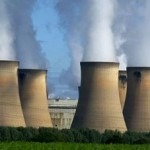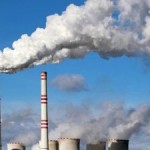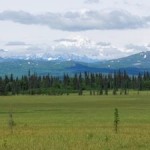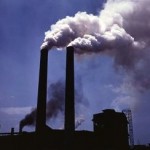 Geneva – The amount of greenhouse gases in the atmosphere reached a new record high in 2012, continuing an upward and accelerating trend which is driving climate change and will shape the future of our planet for hundreds and thousands of years.
Geneva – The amount of greenhouse gases in the atmosphere reached a new record high in 2012, continuing an upward and accelerating trend which is driving climate change and will shape the future of our planet for hundreds and thousands of years.
The World Meteorological Organization’s annual Greenhouse Gas Bulletin shows that between 1990 and 2012, there was a 32% increase in radiative forcing – the warming effect on our climate – because of carbon dioxide (CO2) and other heat-trapping long-lived gases such as methane and nitrous oxide.
Carbon dioxide, mainly from fossil fuel-related emissions, accounted for 80% of this increase. The atmospheric increase of CO2 from 2011 to 2012 was higher than its average growth rate over the past ten years, according to the Greenhouse Gas Bulletin.
Since the start of the industrial era in 1750, the global average concentration of CO2 in the atmosphere has increased by 41%, methane by 160% and nitrous oxide by 20%.
What is happening in the atmosphere is one part of a much wider picture. Only about half of the CO2 emitted by human activities remains in the atmosphere, with the rest being absorbed in the biosphere and in the oceans.
“The observations from WMO’s extensive Global Atmosphere Watch network highlight yet again how heat-trapping gases from human activities have upset the natural balance of our atmosphere and are a major contribution to climate change,” said WMO Secretary-General Michel Jarraud.
“The Intergovernmental Panel on Climate Change (IPCC) in its recent 5th Assessment Report stressed that atmospheric concentrations of carbon dioxide, methane, and nitrous oxide have increased to levels unprecedented in at least the last 800,000 years,” he said. “As a result of this, our climate is changing, our weather is more extreme, ice sheets and glaciers are melting, and sea levels are rising,” said Mr. Jarraud.
“According to the IPCC, if we continue with ‘business as usual’, global average temperatures may be 4.6 degrees higher by the end of the century than pre-industrial levels – and even higher in some parts of the world. This would have devastating consequences,” he said.
“Limiting climate change will require large and sustained reductions of greenhouse gas emissions. We need to act now, otherwise we will jeopardize the future of our children, grandchildren and many future generations,” said Mr. Jarraud. “Time is not on our side,” he added.
The WMO Greenhouse Gas Bulletin reports on atmospheric concentrations – and not emissions – of greenhouse gases. Emissions represent what goes into the atmosphere. Concentrations represent what remains in the atmosphere after the complex system of interactions between the atmosphere, biosphere and the oceans.
Carbon Dioxide (CO2)
Carbon dioxide is the single most important greenhouse gas emitted by human activities such as fossil fuel burning and deforestation. According to WMO’s Greenhouse Gas Bulletin, on the global scale, the amount of CO2 in the atmosphere reached 393.1 parts per million in 2012, or 141% of the pre-industrial level of 278 parts per million.
The amount of CO2 in the atmosphere increased 2.2 parts per million from 2011 to 2012, which is above the average 2.02 parts per million per year for the past 10 years, showing an accelerating trend.
Monthly observed concentrations of CO2 in the atmosphere exceeded the symbolic 400 parts per million threshold at several Global Atmosphere Watch stations in the Arctic during 2012. During 2013, hourly and daily concentrations passed this threshold in other parts of the world, including at Mauna Loa, Hawaii, the oldest continuous atmospheric measurement station in the world, which is widely regarded as a benchmark site in the Global Atmosphere Watch. Concentrations of CO2 are subject to seasonal and regional fluctuations. At the current rate of increase, the global annual average CO2 concentration is set to cross the 400 parts per million threshold in 2015 or 2016.
CO2 lingers in the atmosphere for hundreds if not thousands of years and so will determine global mean surface warming by the late 21st century and beyond. Most aspects of climate change will persist for centuries even if emissions of CO2 are stopped immediately.
Methane (CH4)
Methane is the second most important long-lived greenhouse gas. Approximately 40% of methane is emitted into the atmosphere by natural sources (e.g., wetlands and termites), and about 60% comes from human activities like cattle breeding, rice agriculture, fossil fuel exploitation, landfills and biomass burning.
Atmospheric methane reached a new high of about 1819 parts per billion (ppb) in 2012, or 260% of the pre-industrial level, due to increased emissions from anthropogenic sources. Since 2007, atmospheric methane has been increasing again after a temporary period of levelling-off.
In a special section on methane, the bulletin said that there has not yet been a measurable increase in Arctic methane due to melting of the permafrost and hydrates. It said that the increase in global average methane levels was rather associated with increased emissions in the tropical and mid-latitude Northern Hemisphere. Attribution of this increase to anthropogenic (human-influenced) or natural sources requires better coverage and more sophisticated observations in the atmosphere, which are currently not available.














